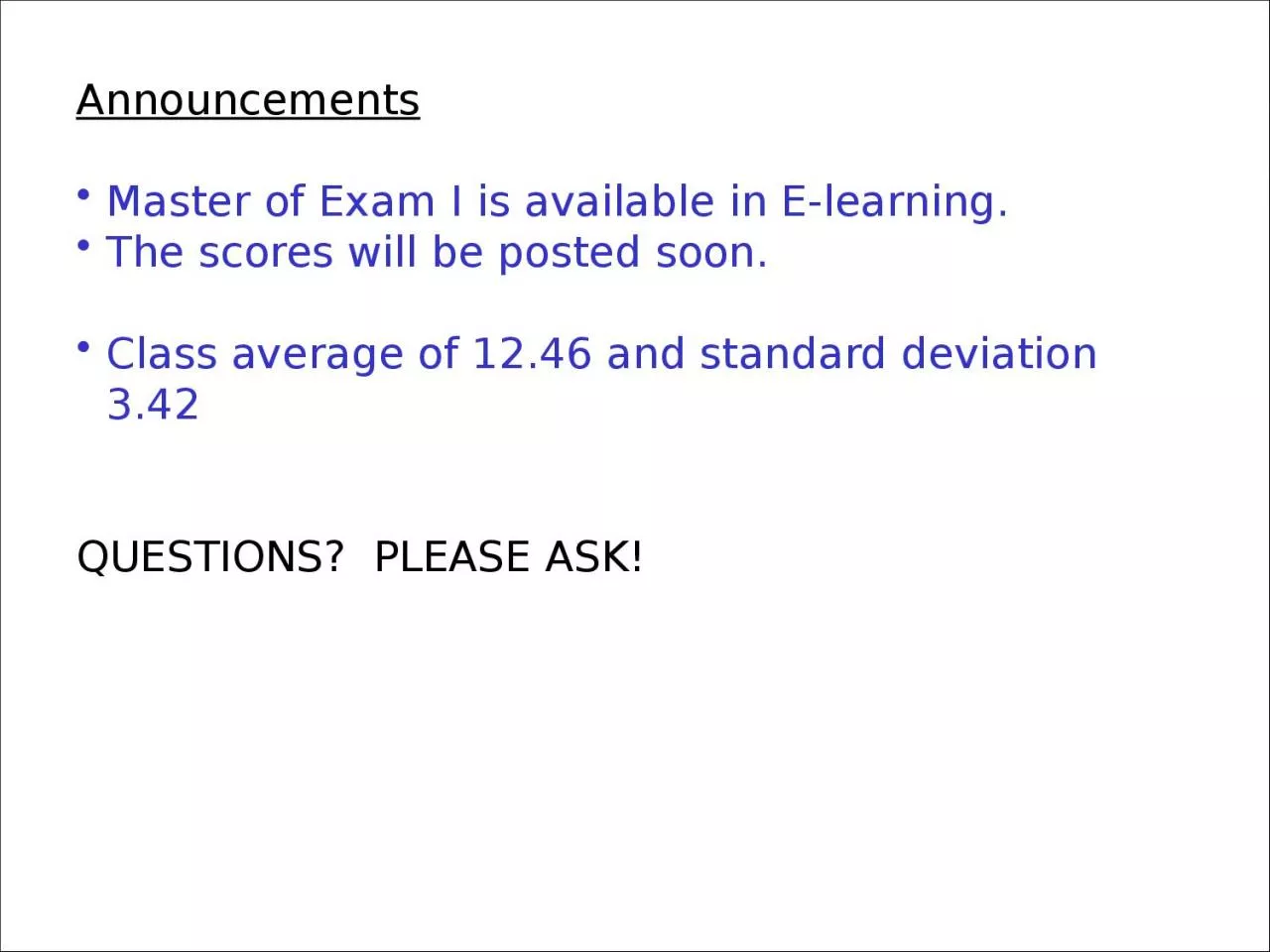

The scores will be posted soon Class average of 1246 and standard deviation 342 QUESTIONS PLEASE ASK From last time Temperature dependence of resistivityresistance Electrical Energy Superconductors ID: 1031452
Download Presentation The PPT/PDF document "Announcements Master of Exam I is availa..." is the property of its rightful owner. Permission is granted to download and print the materials on this web site for personal, non-commercial use only, and to display it on your personal computer provided you do not modify the materials and that you retain all copyright notices contained in the materials. By downloading content from our website, you accept the terms of this agreement.
1. AnnouncementsMaster of Exam I is available in E-learning.The scores will be posted soon.Class average of 12.46 and standard deviation 3.42QUESTIONS? PLEASE ASK!
2. From last timeTemperature dependence of resistivity/resistance Electrical Energy:SuperconductorsRemarkable materials
3. Example Problem17.40 A certain toaster has a heating element made of Nichrome resistance wire. When the toaster (at 20°C) is first connected to 120 V source, the initial current is 1.80 A, but the current decreases when the element heats up. When the toaster reaches it final temperature, the current is 1.53 A. (a) Find the power the toaster produces at its final temperature. (b) What is the final temperature?
4. Solution to 17.40
5. Chapter 18Direct Current Circuits
6. emfemf maintains the current in a closed circuit Any device that increases the potential energy of charges circulating in circuits; e.g., batteries and generatorsSI units are VoltsThe emf is the work done per unit chargeReal batteries have small internal resistanceTherefore, the terminal voltage is not equal to the emf
7. Internal Resistanceinternal resistance rTerminal voltage: ΔV = Vb-VaΔV = ε – IrThis is the voltage drop that the circuit ‘sees’ For the entire circuit, ε = IR + Irload resistance R When R >> r, r can be ignoredGenerally assumed in problemsPower: I e = I2 R + I2 rWhen R >> r, most of the power delivered by the battery is transferred to the load resistor
8. Resistors in SeriesCurrent is the same in R1 and R2 Conservation of chargeΔV = ΔV1 + ΔV2 = IR1 + IR2 = I (R1+R2) = I ReqGeneral: Req = R1 + R2 + R3 + …The equivalent resistance has the effect on the circuit as the original combination of resistors
9. Equivalent Resistance – Series: An ExampleFour resistors are replaced with their equivalent resistance
10. Resistors in ParallelEquivalent resistance replaces the two original resistances
11. Equivalent Resistance – ParallelCurrent splits at upper junction: I = I1 + I2 + I3Write in terms of voltage drop Equivalent ResistanceThe equivalent resistance is always less than the smallest resistor in the group!
12. Example Problem 18.8(a) Calculate the equivalent resistance of the 10 Ω and 5 Ω resistors. (b) Calculate the combined equivalent resistance of the 10 Ω, 5 Ω, and 4 Ω resistors. (c) Calculate the equivalent resistance found in part b and the parallel 3 Ω resistor. (d) Combine the equivalent resistance from part c and the 2 Ω resistor. (e) Calculate the total current in the circuit. (f) What is the voltage drop across the 2 Ω resistor? (g) Subtracting the result of part f from the battery voltage, find the voltage across the 3 Ω resistor. (h) Calculate the current in the 3 Ω resistor.
13. Solution to 18.8 (I)
14. Solution to 18.8 (II)
15. Example Problem 18.13Find the current in the 12 Ω resistor.
16. Solution to 18.13 (I)
17. Solution to 18.13 (II)